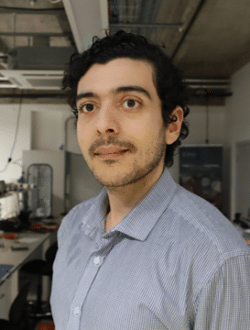Biography
Mahmoud Wagih received his B.Eng. (Hons.) in September 2018, and his award-winning Ph.D. on rectenna design in April 2021, both in Electrical and Electronic Engineering from the University of Southampton.
He is currently at the University of Glasgow leading the Green RF-Enabled Electronics Lab, having held a UKIC Fellowship from the Royal Academy of Engineering, and is the Founder of RX Watt Ltd. His interests broadly cover RF-enabled sustainable systems for energy harvesting, sensing, and wearable applications. He has published 130 journal and conference publications, across Nature Portfolio, Advanced, and IEEE Transactions journals, and 3 patents, and has been principal/co-investigator on over £15M research projects.
Dr. Wagih is an IEEE Distinguished Microwave Lecturer (DML), and Speakers’ Bureau speaker and Vice Chair for MTT TC-26, RFID, IoT, and Wireless Sensors. He received 20+ awards including multiple IEEE Best Paper/Presentation (IMS, WPTC, PowerMEMSx2), the EurAAP Per-Simon Kildal Best PhD in Europe in Antennas and Propagation, 2 URSI Young Scientist Award, was listed in Forbes 30 Under 30 for Science & Healthcare, 2024, and most recently the Royal Academy of Engineering Sir George MacFarlane Medal as the UK’s Young Engineer of the Year. He has served on multiple TPCs, e.g. TPC Co-chair for IEEE SAS 2025, and member of IMS TPC. He is a Topic Editor for the IEEE Journal of Microwaves, and an Associate Editor for Royal Society Open Science.
Presentations
MAKING MICROWAVES GREEN: FROM LIFE CYCLE ASSESSMENTS TO CHIPLESS SENSING SOLUTIONS
Abstract:
Wireless microwave connectivity underpins almost all areas of modern digital society, from communications, sensing, to positions. However, the carbon emissions and e-waste generated from wireless microwave hardware needs to be tackled through innovative materials, design, and integration solutions, to build sustainable connected systems. This DML talk will cover the role of microwave sensing and connectivity in a sustainable and circular economy.
First, the industry-standard methodology of Life Cycle Assessment (LCA) will be introduced for the first time, in the context of microwave hardware. The end-to-end impact of manufacturing and power consumption, and directions to make RFICs and PCBs more sustainable will be presented. Then, novel recycling and re-use solutions will be introduced for microwave circuits, showing how metals, substrates, and RFICs/MMICs, can be sustainably re-used. Finally, the opportunities for microwaves to enable new sustainable sensing applications in a chip-less way will be discussed. In particular, how novel materials which respond to almost any measurand, such as temperature, humidity, or gases, could be applied in practical chipless sensors, with low-cost and open-source
multiplexed readouts. The talk will conclude with guidelines on how microwave hardware can be designed, recycled, and optimised for sustainability and performance.
